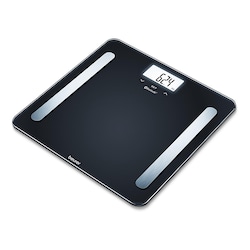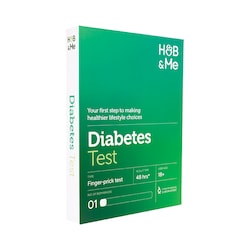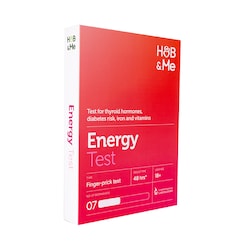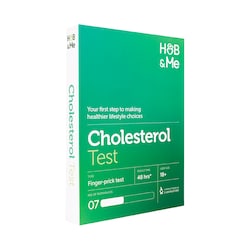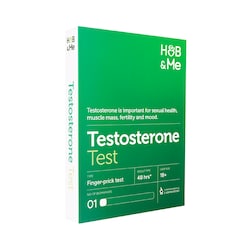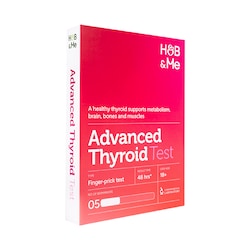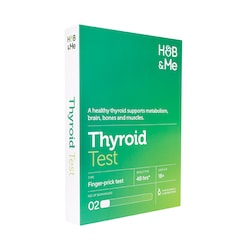20% off £30
How to use a blood test for thyroid function at home

Your thyroid gland is responsible for keeping your hormones in check, helping you sleep, providing you with energy and helping you stay warm. Which is why it’s important to know that it’s functioning as it should.
For a general overview of your thyroid function, at home tests are a great option. Find out what they involve and how to use them below.
Why you should use a thyroid test
Both an underactive and overactive thyroid can cause a wide range of symptoms, affecting things like:
- Your weight
- Your mood
- Your sleep
- Your energy levels
- Your digestive system1,2
Both men and women can experience an issue with their thyroid function, so don’t be put off when it comes to taking a test.
Also, if you have a family history of thyroid issues, it may be worth testing to keep an eye on your thyroxine levels.
We touched on the areas of your health that your thyroid can affect, but it’s time to dive a little deeper into the detail.
First up, what are the symptoms of hypothyroidism (an underactive thyroid)? Some of the most common signs and symptoms include:
- Tiredness
- Sensitivity to the cold
- Gaining weight
- Constipation
- Depression
- Slow movements and thoughts
- Muscle aches and weakness
- Muscle cramps
- Dry and scaly skin
- Brittle hair and nails
- Loss of or lowered libido
- Discomfort, numbness and a tingling sensation in the hand and fingers
- Irregular periods or heavy periods2
On the other hand, what are the symptoms of hyperthyroidism (or an overactive thyroid)? While some of the symptoms cross over, it’s worth knowing what else this type of thyroid issue can cause. Here’s what to look out for:
- Nervousness, anxiety or irritability
- Hyperactivity – you might find it hard to stay still and have a lot of nervous energy
- Mood swings
- Difficulty sleeping
- Feeling tired all the time
- Sensitivity to heat
- Muscle weakness
- Diarrhoea
- Needing to pee more often than usual
- Persistent thirst
- Itchiness
- Loss of interest in sex1
What you’ll find in your kit
Not used a thyroid test kit before? You might be wondering what comes with it. Thankfully they’re kept pretty simple, containing just a few key things, including:
- Lancet
- Collection tube
- Prepaid return envelope
- Plaster
How to use a thyroid test at home
- Prep your environment so the surfaces around you are clean and dry.
- Then make sure that your hands are also clean and dry.
- Use the finger prick device and gently run your fingers down the finger that has been pricked so that the droplets fall into the tube.
- Prep the tube and package as per the instructions and send in the prepaid envelope.
- When you’ve sent your parcel, it will be processed at a lab before you receive your results.
A little more about using a blood test for thyroid function
A lot of at home thyroid tests assess your Thyroid Stimulating Hormone (TSH) and Free Thyroxine (T4) to find out if you have an underactive or overactive thyroid. Or you may find that your levels are within the normal ranges.
If you want a more in-depth look at your T3, Anti-thyroglobulin (anti-Tg) and Thyroid peroxidase (anti-TPO) antibodies, it may be worth speaking to your GP, as they’ll also provide you with medical advice on what to do next.
The final say
Convenient, quick and easy to use, doing a thyroid test at home could be the way forward if you’re trying to get a general idea of your thyroid function – without all the waiting.
The advice in this article is for information only and should not replace medical care. Please check with your GP or healthcare professional before trying any supplements, treatments or remedies. Food supplements must not be used as a substitute for a varied and balanced diet and a healthy lifestyle.
Last updated: 9 January 2023
- https://www.nhs.uk/conditions/overactive-thyroid-hyperthyroidism/symptoms/
- https://www.nhs.uk/conditions/underactive-thyroid-hypothyroidism/




